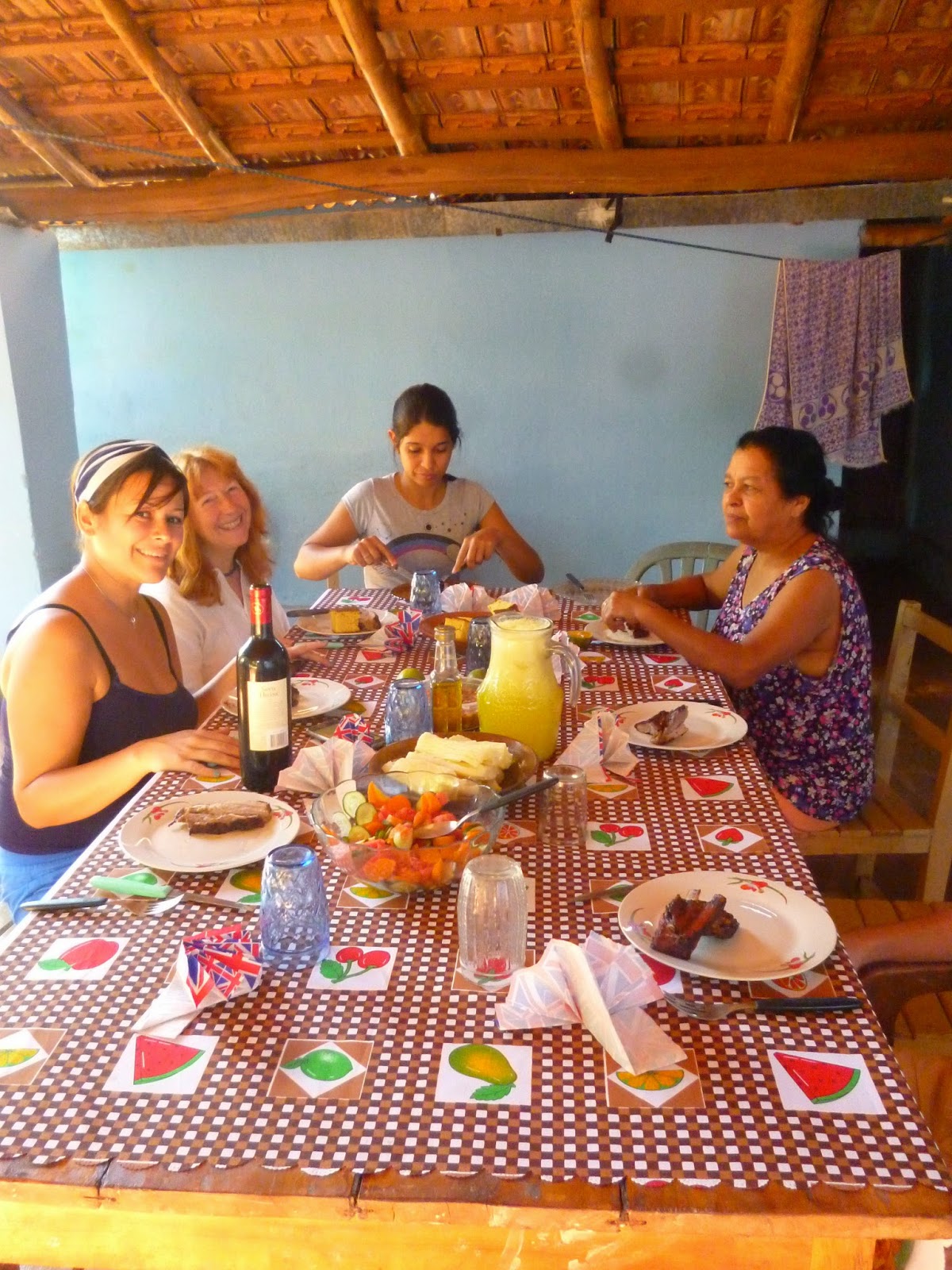[See those clouds at the top of the left-hand picture? Not ordinary clouds. They are in fact the spray thrown up from a colossal waterfall known as the "Devil's Throat"...]
On seeing these waterfalls, Eleanor Roosevelt allegedly said "Poor Niagara!". I have never been to the Niagara Falls, but it's hard to imagine anything more incredible than Iguazu. It means "Big Water" in Guarani, but we were searching for fresh adjectives at every new viewpoint - "indescribable" is perhaps the most accurate! The weather cooperated to festoon the scenery with rainbows wherever you looked.
 |
| Just one more spectacular rainbow-wreathed view |
If you ever get the chance, go and see it for yourself - the photos can't do it justice. Speaking of photos, there are a lot of old ones here as part of a Brazilian project. Don't be put off by the Portuguese - the pictures speak for themselves. If you click on the 'Documentary' tab, the third video is a rather amusing British effort from the 1920s.
 |
| Pre-Health and Safety. |
Colossal, immense, monumental, spectacular, amazing, wonderful, magical, bewitching, enchanting, hypnotising, mesmerising, awe-inspiring, impressive, fearsome, implacable, relentless, foreboding, heavenly, incredible, unbelievable, indescribable, stunning, striking, breathtaking, astonishing, astounding, majestic, magnificent.....et cetera, usw.























